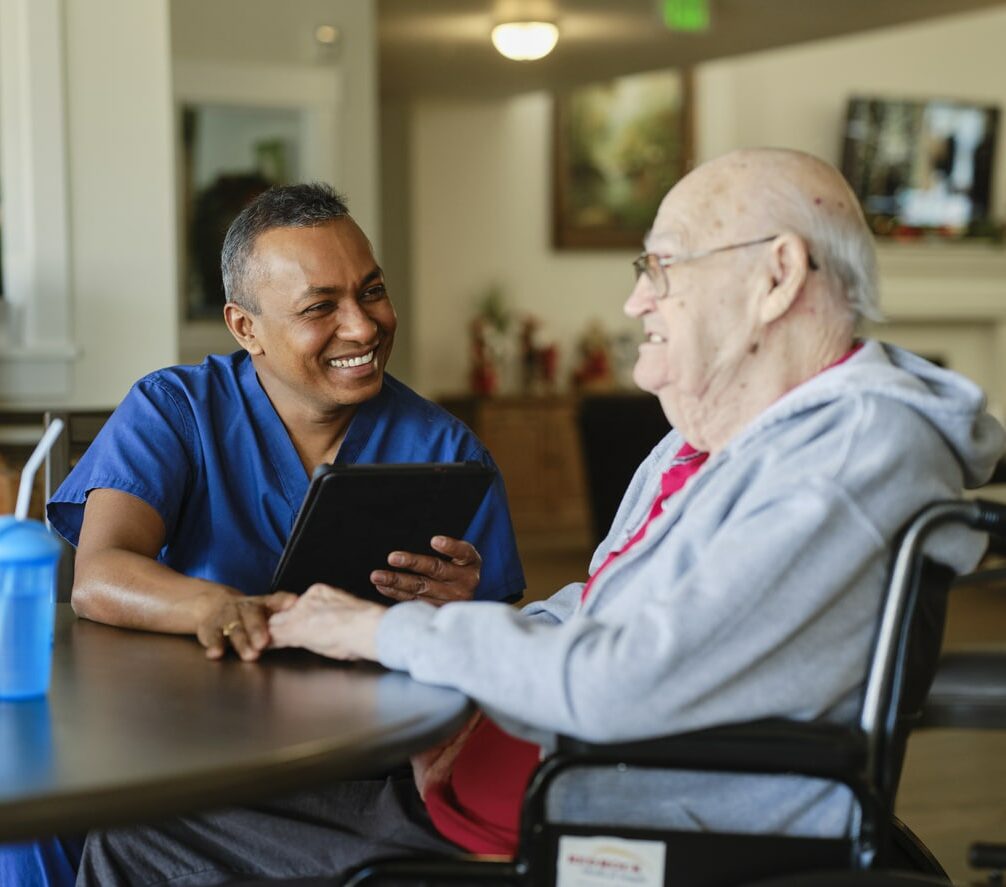Nursing homes are designed to offer safety, care, and dignity for elderly patients and senior citizens throughout their later years. These facilities should be safe spaces. Families should be able to trust that their loved ones receive compassion and respect.
Unfortunately, abuse and nursing home neglect can sometimes occur, leading to unexplained broken bones and serious harm. The most common and serious injuries in nursing homes are bone fractures and breaks. These can happen due to falls, improper handling, or even intentional harm. Those injuries can lead to serious problems. They can impact mobility, health, and quality of life.
At Arkansas Legacy Planning, our experienced legal professionals are dedicated to helping families seek justice for their loved ones. We work tirelessly to hold nursing homes accountable and ensure that the elderly’s rights are protected.
Understanding Nursing Home Fractures
Nursing home fractures, including broken bones, can lead to even more severe injuries for elderly residents. These injuries often result in impaired mobility, loss of independence, and chronic pain.
Studies show that senior citizens who experience a fracture face a higher risk of complications. These complications include an increased risk of mortality. The National Library of Medicine indicates that residents with hip fractures face a higher risk of death within six months.
Fractured bones may also signal neglect or abuse, which can lead to further injury if not addressed . This is especially true if the injury is unexplained or improperly treated. These warning signs emphasize the need for careful attention and proper care for nursing home residents.

Causes of Bone Fractures in Nursing Homes
Fractures in nursing facilities are often caused by accidents or intentional acts. Below are some of the main causes:
Preventable Falls
Falls are the leading cause of fractures in nursing homes. These include slip-and-fall incidents or trips due to unsafe environments. Common contributing factors are:
- Wet or slippery floors
- Cluttered walkways
- Improper footwear
- Malfunctioning or absent assistive devices
The CDC says that every year, half to three-quarters of nursing home residents fall. This rate is twice as high as the fall rate for older adults living in the community.
Neglect and Poor Supervision
Staff shortages, poor training, or lack of attention can lead to falls and injuries. Elderly residents can fall while:
- Getting out of bed
- Transferring to chairs or wheelchairs
- Walking without proper supervision
Physical Abuse
Physical assault and mistreatment in nursing homes can also cause bone fractures. Abuse-related injuries may include traumatic fractures caused by shoving, striking, or restraint.
Medical Conditions and Risk Factors
Elderly residents in nursing facilities often have risk factors that make fractures more likely. These include:
- Osteoporosis, which weakens bones
- Muscle weakness, which affects balance
- Medications that cause dizziness or instability
- Chronic illnesses such as diabetes or arthritis
Proper care and effective fall prevention strategies are essential to prevent falls. Nursing facilities must conduct thorough medical screenings and assessments upon admission. These steps help identify risk factors and ensure residents receive the care they need.
Common Types of Bone Fractures in Nursing Homes
Not all fractures look the same. These are the most common types of breaks seen among nursing home residents:
- Hip Fractures
Hip fractures are serious injuries that affect the elderly. These injuries are often life-threatening. They account for over 300,000 hospitalizations per year. Most are caused by falls.
- Compression Fractures
Small cracks in the vertebrae often result from osteoporosis. These fractures can occur even from minor actions like coughing or bending.
- Stress Fractures
These are also called “hairline fractures.” They are caused by repetitive motion or overuse. These typically impact the lower legs and feet.
- Traumatic Fractures
These fractures occur when a large external force, such as a fall or assault, causes broken bones.
- Multiple or Repeated Fractures
The presence of multiple fractures in various stages of healing may indicate abuse or neglect.
These injuries highlight the fragility of elderly nursing home residents. Effective preventive measures are essential. When injuries happen, proper and timely medical care is crucial for their well-being.
Liable Parties in Nursing Home Fracture Claims
If your loved one suffers a fracture or unexplained injury in a nursing facility, it is important to determine who is responsible. Potentially liable parties include:
- Nursing Home Management and Administration
The facility’s administration has a legal obligation to enforce safe environments. They must provide proper staffing and implement fall prevention plans.
- Nursing Home Staff Members
Individual employees may be responsible for reckless actions. Neglectful behaviors or intentional abuse may also make them liable.
- Third-Party Contractors
Faulty equipment, such as wheelchairs or bed rails, may contribute to injuries. Third-party vendors may share liability in such cases.
Our skilled attorneys bring dedication and expertise to every nursing home abuse case, ensuring compassionate and effective representation. We conduct comprehensive investigations to identify all responsible parties. This means going beyond the obvious to uncover every avenue of accountability. Our mission is to seek justice for victims and ensure they obtain the full compensation they rightfully deserve.
Nursing Home’s Duty to Prevent Fractures
By law, nursing facilities must take reasonable steps to protect residents from harm. Federal regulations, like 42 CFR §483.25(d), require nursing facilities to:
- Conduct Regular Fall Risk Assessments
Evaluate the risk of falls for residents or patients on a regular basis. Consider factors such as age, medical conditions, medication side effects, and mobility challenges. Use standardized assessment tools to identify risks early. Implement targeted preventive measures.
- Maintain a Safe, Hazard-Free Environment
Make sure all spaces are well-lit and free of clutter. Use clear signage to guide individuals. Address hazards such as loose rugs, uneven flooring, wet surfaces, or poorly arranged furniture. Create a secure environment that minimizes fall risks.
- Train Staff in Fall Prevention and Emergency Response
Provide comprehensive training to staff on identifying fall risks. Teach staff how to assist individuals with limited mobility. Ensure emergency response training is in place to manage injuries promptly and professionally.
- Provide and Maintain Assistive Devices
Make mobility aids such as canes, walkers, handrails, and non-slip mats easily accessible. Ensure all devices are well-maintained and in good condition. Install handrails in critical areas such as hallways, bathrooms, and staircases. Place non-slip mats in high-risk zones to promote safety.

Why You Need Legal Representation for Nursing Home Fracture Claims
Pursuing a personal injury lawsuit or abuse claim against a negligent nursing facility can be intimidating. Getting legal help, like a free consultation, is the best way to seek justice and get compensated. A professional nursing home abuse lawyer can:
- Investigate the circumstances surrounding the fracture
- Collect evidence such as medical records, eyewitness accounts, or facility histories
- Establish negligence or abuse
- Calculate damages for medical expenses, pain and suffering, and more
- Negotiate with the facility or their insurance company for a fair settlement
- Represent you in court if necessary
Seeking the help of a skilled nursing home abuse lawyer can provide emotional support during an already difficult time. We offer guidance and reassurance while fighting for your rights. We hold accountable those responsible for your loved one’s suffering.
Holding facilities accountable for their actions sends a message that neglect and abuse will not be tolerated. This ultimately leads to improved care and safety standards in nursing homes.
Taking Action After a Fracture
If your loved one suffers a broken bone in a nursing home, it is important to act quickly and carefully. Follow these steps to protect their health and rights:
- Seek immediate medical care to ensure the injury is treated properly. This step prevents further harm or complications. Prompt medical attention is critical for recovery and well-being.
- Report the incident to Adult Protective Services or local authorities. It is important that the situation is documented formally. An investigation can determine if neglect or abuse was a factor.
- Document the injury in detail. Take clear photos of the injury, the area where it occurred, and any hazards that may have contributed. Keep copies of all medical records, including diagnosis, treatment plans, and hospital visits. These records can serve as important evidence.
- Contact a nursing home abuse attorney to explore legal options. An experienced attorney can assess the situation and determine if negligence or abuse caused the injury. We can guide you on actions to hold responsible parties accountable.
Following these steps can help ensure your loved one receives the care and attention they deserve. These are proactive measures to help prevent similar incidents from happening in the future. It also provides an opportunity to pursue justice and accountability in cases of neglect or abuse.
Holding Nursing Home Facilities Accountable
Every nursing home resident deserves to live in a safe, respectful, and caring environment. If facilities neglect these standards, it can be devasting for residents and their families. Holding these facilities accountable is critical. Filing a personal injury claim offers important benefits, such as:
- Offering compensation for medical bills, rehab costs, pain, suffering, and other expenses. This support helps families recover financially from the harm caused.
- Highlighting systemic issues in nursing homes. It shows unsafe practices, low staffing, or bad conditions that might stay hidden.
- Protecting other residents from similar harm. It drives change and encourages better oversight and accountability within the facility.
By pursuing a claim, families and residents help ensure safety, transparency, and justice. These steps are crucial for improving the standard of care in nursing homes and preventing future harm.

Frequently Asked Questions
The chances of winning a lawsuit against a nursing home depend on many factors. These include the strength of the evidence, the severity of the harm caused, and the legal expertise of your representation. A strong claim with clear negligence or abuse improves the likelihood of success.
The value of a broken bone settlement depends on several factors. These include the injury’s severity, medical costs, pain and suffering, and other damages. Settlements often range from thousands to tens of thousands of dollars or more, depending on the case.
Hip fractures and multiple broken bones are often the hardest for elderly individuals to recover from. They can lead to big mobility issues, longer recovery times, and higher chances of complications, such as infections or blood clots.
The amount you can sue for a broken bone depends on the details of the injury. Medical bills, lost wages, pain and suffering, and long-term effects are important factors. Courts consider these when determining compensation, which can vary widely.
Falls are the most common injury in nursing homes, leading to various fall related injuries . They often cause fractures, cuts, and head injuries. These injuries can happen due to a lack of staff supervision, improper use of assistive devices, or hazards in the facility.
Spiral fractures are often associated with abuse. They occur when a twisting force is applied to the bone. These injuries should always be investigated, especially in vulnerable populations like nursing home residents.
Negligence in a nursing home means failing to provide proper medical care. It also includes poor supervision, not enough staff, dirty conditions, and ignoring residents’ needs. Any behavior or conditions that harm or put a resident at risk may be considered negligent.
To file a complaint against a nursing home in Arkansas, contact the Arkansas Department of Human Services’ Office of Long Term Care. Complaints can be made by phone, mail, or online. Provide detailed information about the issue and evidence to support your claim.
Falls are the number one cause of injury for elderly individuals in nursing homes. Lack of maintenance, poor supervision, or missing items like handrails can raise the risk. Preventative measures are necessary to reduce these risks.

Free Consultation with a Nursing Home Abuse Lawyer
No family should have to endure the heartbreak of seeing a loved one suffer from abuse or neglect. If you suspect harm in a nursing home, Arkansas Legacy Planning is here to help.
We uncover the truth. We hold those responsible accountable. We fight to secure the compensation your family deserves. Contact our experienced nursing home abuse attorneys for a free consultation.

Contact Us
Feeling lost or worried about your future? Our team at Arkansas Legacy Planning is here to provide personalized support for all your estate planning needs. Contact us today so we can start working on a clear, tailored strategy designed specifically to safeguard what matters most to you.


